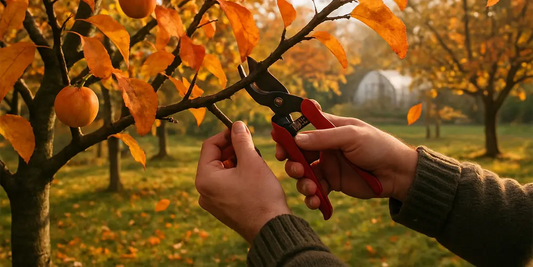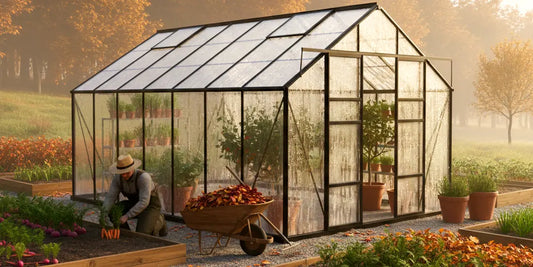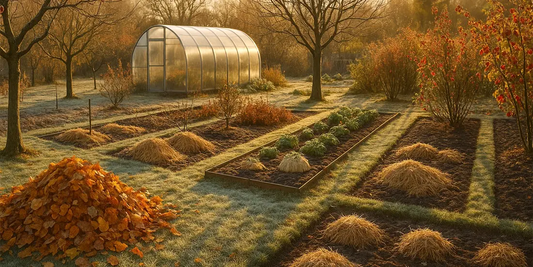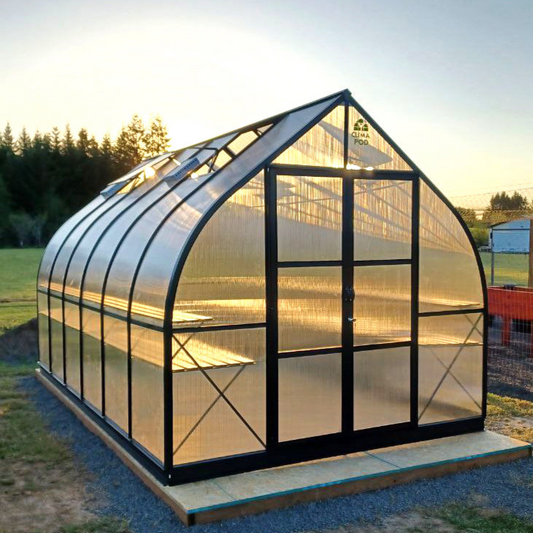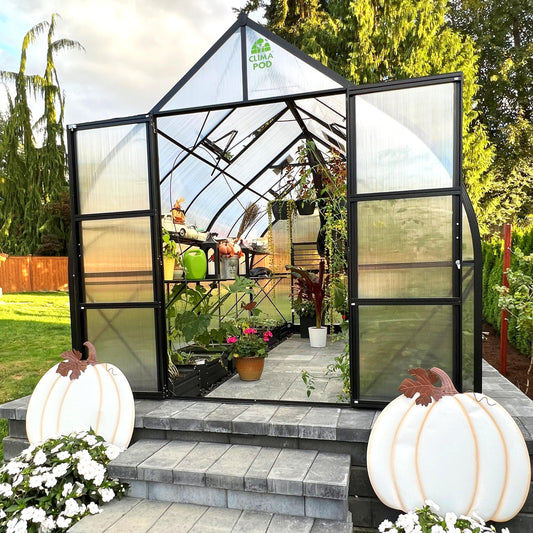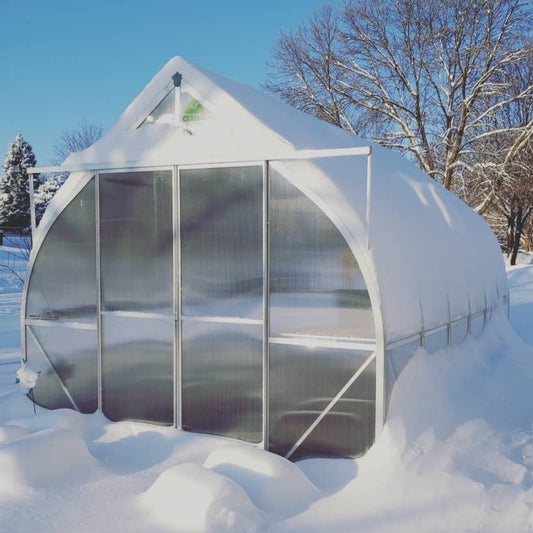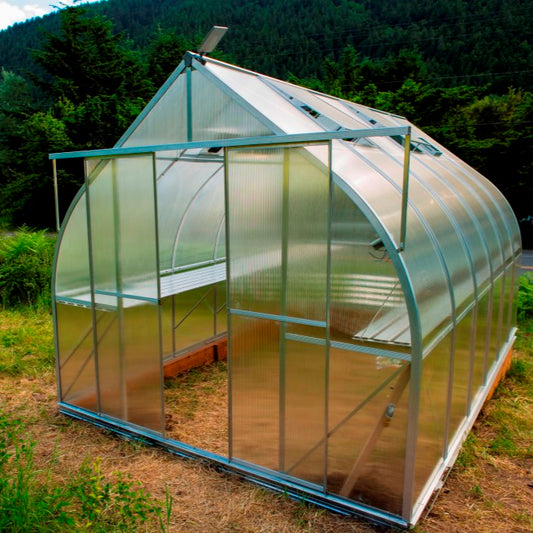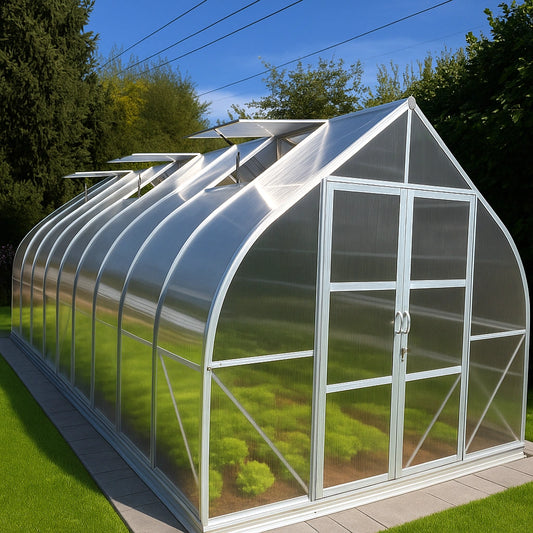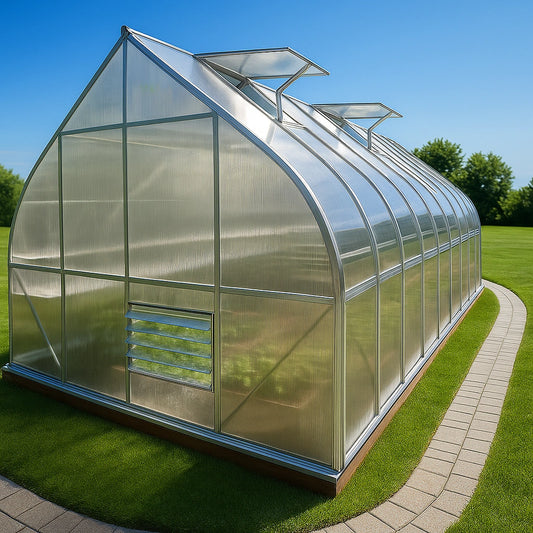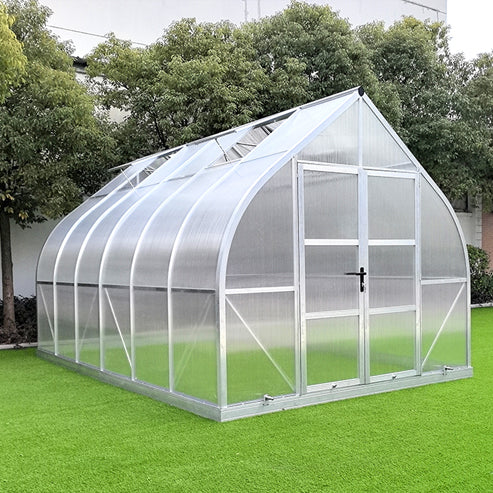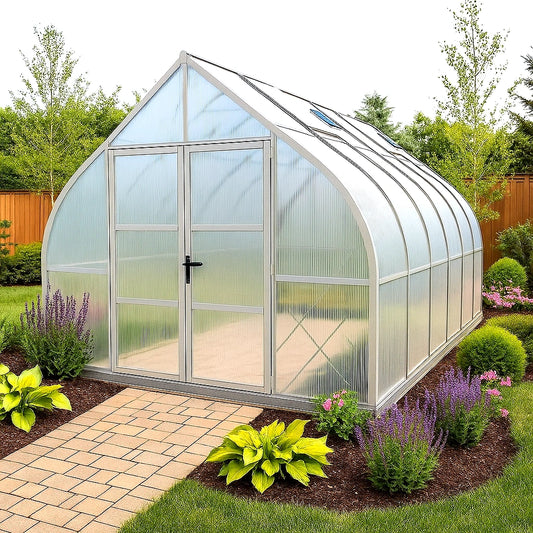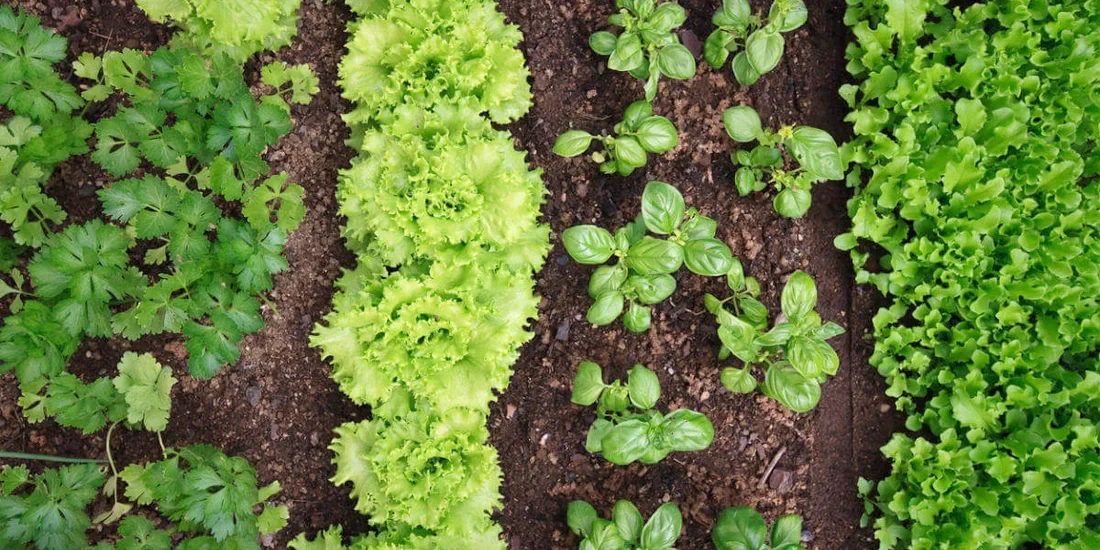
Companion Planting: Best & Worst Garden Buddies for Your Greenhouse
Choosing the right plant neighbors can make or break your yield, especially in a greenhouse setting. Companion planting helps repel pests and boost growth. Explore proven pairings to maximize productivity in your space.
Why Companion Planting Matters
Companion planting is nothing new, Native Americans coined the “Three Sisters” practice (corn, beans, squash) centuries ago. Whether in open ground or a greenhouse, pairing plants properly can:
- Enhance soil fertility (e.g., beans fix nitrogen for neighbors)
- Deter pests, marigolds repel aphids and whiteflies; nasturtiums trap cabbage moths
- Provide mutual support: corn stakes beans; squash shades soil
But some plants don’t get along - sharing pests, draining each other’s nutrients, or stunting growth. Below is a comprehensive table tailored for North American climates.
Garden Compatibility Table
|
Culture |
Good Neighbors |
Bad Neighbors |
|---|---|---|
|
Basil |
Asparagus, beets, borage, carrots, chamomile, onions, marigolds, oregano, peppers, tomatoes. Borago improves the growth and taste of basil. Chamomile, chives, and oregano increase the content of essential oil in basil. Basil and marigolds together are a powerful natural pest repellent. Basil itself repels aphids, asparagus beetles, and tomato hawk moths. It also increases tomato yields, and the flowers attract pollinating insects. |
Cucumber, fennel, rue, sage |
|
Eggplant |
Beans, catnip, marigolds, peas. Catnip repels fleas, a common pest of vegetable crops. Beans and peas fix nitrogen in the soil. Marigolds repel nematodes and aphids. |
Others from the nightshade family: peppers, potatoes, tomatoes, which make eggplants more susceptible to late blight. |
|
Beets |
Cabbage, garlic, kohlrabi, leeks, lettuce, onions. Garlic improves the growth and taste of beets. |
Beans and beets inhibit each other's growth. |
|
Peas |
Carrots, celery, corn, cucumbers, eggplants, lettuce, potatoes, radishes, spinach, tomatoes. Peas combine well with many vegetables, as they increase the availability of nitrogen in the soil. |
Onions can delay the growth of peas. |
|
Zucchini |
Beans, borage, corn, marigolds, nasturtium, peas, radishes, tansy. Borago attracts pollinating insects, improves growth and taste. Nasturtium, radishes and tansy repel aphids and other pests. |
Potatoes, pumpkins. Potatoes compete for nutrients. Pumpkins, which are closely related to squash, can cross-pollinate. |
|
Cabbage |
Bush beans, beets, celery, chamomile, dill, mint, onions, oregano, rosemary, sage, savory, nasturtium. Marigolds and aromatic herbs such as mint, rosemary, and savory repel cabbage moths. Dill, celery, garlic, mint and onion improve the taste of cabbage. |
Beans, mustard, strawberries, tomatoes. |
|
Broccoli |
Basil, beets, celery, cucumber, dill, garlic, lettuce, marigolds, mint, nasturtium, onions, potatoes, radishes, rosemary, spinach, thyme. Dill attracts predatory wasps that fight pests. Rosemary repels cabbage flies. Celery, potatoes and onions improve the taste of broccoli. |
Asparagus, beans (climbing), corn, melons, peppers, pumpkin, squash, strawberries. |
|
Potatoes |
Basil, beans, cabbage, chamomile, corn, horseradish, lettuce, marigolds, parsley, peas, radishes, spinach, thyme. Beans repel the Colorado potato beetle. Horseradish increases resistance to diseases. Many herbs, such as basil, chamomile, parsley and thyme, improve the taste of potatoes, attract beneficial insects. |
Cucumbers, raspberries and tomatoes attract insects. Avoid planting near other vegetables from the nightshade family. Asparagus, carrots, fennel, onions can retard potato growth. |
|
Beans (bush) |
Beets, cabbage, carrots, catnip, celery, corn, cucumber, eggplant, marigolds, nasturtium, peas, potatoes, radishes, rosemary, zucchini. Catnip repels flea beetles, a common pest of vegetable crops. Marigolds, nasturtiums, and rosemary repel numerous pests. The beans themselves provide the soil with nitrogen. |
Onions, in particular onions and garlic, which can inhibit the growth of legumes. |
|
Beans (climbing) |
Broccoli, cabbage, carrots, catnip, celery, corn, cucumber, eggplant, marigold, nasturtium, peas, potatoes, radishes, rosemary, zucchini, strawberries, tomatoes. Corn is used as a natural trellis, providing the beans with shade. Zucchini shades the roots and repels pests. |
Beets cause stunted growth of climbing beans, but bush beans do not suffer from this. Also, poor growth of beans is caused by proximity to onions. |
|
Dill |
Cabbage, corn, cucumber, lettuce, onion. Dill repels pests including aphids, cabbage moths, and spider mites. It also attracts beneficial insects such as bees, ladybugs, and parasitic wasps. |
Cilantro, carrots, tomatoes. Dill cross-pollinates with cilantro and carrots. |
|
Corn |
Beans, cucumber, marigolds, melon, parsley, peas, potatoes, pumpkin, squash, sunflower. Beans and peas add nitrogen to the soil. Marigolds repel pests. Corn provides shade and is a natural support for beans. |
Celery, tomatoes. Tomatoes attract pests that attack corn, including tomato hawk moths and cutworms. |
|
Carrots |
Beans, onions, lettuce, chives, peas, peppers, radishes, rosemary, sage, tomatoes. Beans fix nitrogen in the soil. Chives improve growth and flavor. Onions, parsley, rosemary and sage repel carrot flies. |
Dill and parsnips, which can delay carrot growth. |
|
Mint |
Beets, cabbage, eggplant, lettuce, peas, zucchini. Mint is a natural pest control. It repels fleas, aphids, carrot flies, onion flies and spider mites. Mint attracts beneficial insects such as ladybugs and predatory wasps that feed on pests. |
Chamomile, parsley |
|
Cucumber |
Beans, brassicas, corn, dill, lettuce, marigolds, nasturtium, peas, radishes. Dill attracts beneficial insects that feed on pests such as the corn rootworm. Nasturtium repels aphids and beetles while improving growth and flavor. Radishes repel pests. |
Aromatic herbs (except dill), potatoes, tomatoes. Cucumbers do not grow well if planted near potatoes or sage. |
|
Peppers |
Basil, beans, beets, carrots, chives, coriander, cucumber, dill, eggplant, garlic, lettuce, parsley, onions, spinach, tomato. Basil repels aphids, spider mites and thrips, and improves the taste of peppers. Dill and coriander repel aphids and attract beneficial insects. Parsley attracts predatory wasps that feed on aphids. Alliums repel aphids, beetles, snails, and spider mites. |
Brassicas, including broccoli, Brussels sprouts, cabbage, and cauliflower. |
|
Strawberries |
Beans, borage, caraway, onions, garlic, lettuce, sage, spinach, savory. Garlic and onions repel insects. Borage attracts pollinating insects and repels strawberry pests. Caraway attracts beneficial insects such as wasps that attack strawberry pests. |
Avoid planting near plants susceptible to verticillium wilt, such as eggplant, peppers, potatoes and tomatoes. Strawberries can suppress the growth of legumes, as well as broccoli and cauliflower. |
|
Radishes |
Beans, carrots, cucumber, lettuce, melon, nasturtium, peas, spinach, squash. Nasturtium improves the growth and taste of radishes. The radish itself repels many pests of cucurbits. |
Cabbage, hyssop inhibit the growth of radishes. |
|
Rosemary |
Beans, broccoli, cabbage, carrots. The pungent aroma of rosemary repels many pests, including cabbage moth, cabbage moth, carrot fly, snails, slugs and weevils. Rosemary flowers attract pollinating insects. Rosemary enhances the flavor of sage. |
Pumpkin, zucchini |
|
Asparagus |
Basil, coriander, dill, marigold, parsley, tomatoes. Basil, marigolds, parsley and tomatoes protect against asparagus beetles. Coriander and dill repel pests such as aphids and spider mites. |
Garlic, onions, potatoes |
|
Tomatoes |
Asparagus, basil, borage, carrots, celery, cucumber, garlic, lettuce, marigolds, mint, onions, parsley. Basil improves the growth of tomatoes and repels pests. Marigolds repel pests. Plant tomatoes next to asparagus to repel the asparagus beetle. |
Dill, broccoli, Brussels sprouts, cabbage, and cauliflower can stunt tomato growth. Corn attracts tomato |
|
Onions |
Beets, cabbage, carrots, chamomile, lettuce, peppers, strawberries, tomatoes. Onions repel root crop pests, including cabbage root fly, aphids, carrot flies, and Japanese beetles. |
Asparagus, beans, peas, sage. Avoid planting near other allium crops such as garlic, leeks and shallots to avoid the spread of common diseases and pests. |
|
Garlic |
Beets, broccoli, cabbage, carrots, cauliflower, dill, eggplant, kohlrabi, peppers, potatoes, spinach, tomatoes. Garlic repels a wide range of pests, including ants, aphids, cabbage flies, Japanese beetles, onion flies, snails, and spider mites. |
Garlic can stunt the growth of asparagus, beans, parsley, peas, and sage. |
Use this guide to design garden beds or greenhouse layouts that naturally enhance pest control, growth, and yield.

